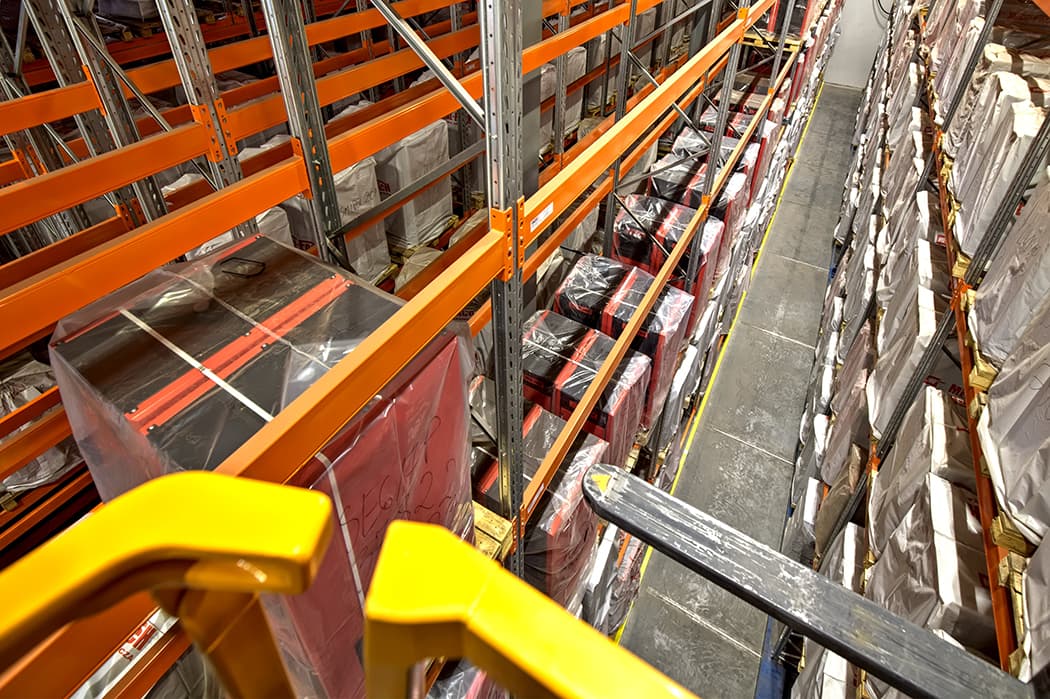Analysts at BNP Paribas Real Estate Poland in their cyclical report “At a Glance – Industrial and Logistics Real Estate Market in Poland, Q1 2024” highlighted that there are currently 2.32 million square meters of industrial and logistics space under construction, placing Poland among the top European markets.
Sector Growth
Although the amount of space under construction in the warehouse sector decreased by about 0.49 million square meters in early 2024 compared to Q4 2023, it remains at a high level. As of the end of March 2024, the total industrial and logistics space in Poland reached 32.7 million square meters, representing an almost 10% year-over-year increase. The industrial and logistics real estate market in Poland is the fastest growing in Europe, with about 2.32 million square meters currently under development, showing a high level of developer activity, slightly lower than the previous quarter. The most investments are still being made in the “Big Five” zones and around Gdańsk and Kraków. Development activity is also noticeable in smaller markets such as the Bydgoszcz/Toruń and Szczecin zones, emphasizes Martyna Kajka, Director, Industrial and Logistics Department, BNP Paribas Real Estate Poland.
In January-March 2024, the most warehouse space was under construction in the zones: Lower Silesia (586,000 square meters), Central Poland (396,700 square meters), and Warsaw II (301,500 square meters). Meanwhile, the most new warehouse space was delivered in Q1 in the zones: Lower Silesia (272,000 square meters), Tricity (167,200 square meters), and Poznań (121,100 square meters).
High Volume of New Supply and Decrease in Demand
In Q1 2024, warehouse developers delivered over 850,000 square meters of industrial and logistics space in Poland, more than 270,000 square meters higher than in the last quarter of 2023. However, demand in this sector is declining. In the first three months of 2024, more than 870,000 square meters of industrial and logistics space were leased, about 25% less than in the same quarter of 2023. According to BNP Paribas Real Estate Poland analysts, this is the lowest level of demand recorded since Q2 2019. Analysts attribute this largely to economic slowdown and the broad increase in operating and financing costs. A decrease in demand for industrial and logistics space has been observed not only in Poland but also throughout the CEE region.
The most lease agreements were signed in Central Poland – over 178,000 square meters were leased in the Łódź region, and 168,000 square meters were leased in the Warsaw II zone. Poznań took third place with 165,000 square meters of leased space. The largest transaction of the quarter was the leasing of 62,000 square meters by a retail sector company at Hillwood Łódź II Chocianowice.
Vacancy Rates Continue to Rise
The vacancy rate has been on an upward trend since 2021, when it reached its lowest value in the history of the industrial and logistics market in Poland at 3.3%. In the January-March 2024 period, it was 8.2%, the highest level since September 2020 (8.5%). Year-on-year, it increased by 1.7 percentage points. After Q1 2024, the volume of unleased space increased to 2.61 million square meters, significantly influenced by the supply of new space (852,000 square meters). The lowest vacancy rates are in Tricity, Rzeszów, and Kraków, where they do not exceed 4%, while the highest are in the central and western parts of the country, in the Wrocław, Zielona Góra, and Gorzów Wielkopolski regions, exceeding 10%.
Warehouse Developers Expand Land Banks
The BNP Paribas Real Estate Poland report draws attention to the new spatial planning and development law, which foresees the replacement of current land-use studies with new general plans by 2025, meaning that changes to local spatial development plans will not be possible until then. A key element of these plans will be the Complementary Development Areas (OUZ), intended to facilitate specific types of investments.
– Initially, warehouses were to be included in the OUZ procedure, which would allow for easier construction. However, the government recently excluded warehouses from the list of investments covered by this procedure. This means that the new regulations will significantly hinder the construction of new warehouses in Poland, potentially negatively impacting the real estate and logistics market, especially in the context of growing demand driven by e-commerce and the development of the logistics sector. In response to the new regulations, developers are expanding their land banks, notes Robert Pawłowski, Director, Industrial and Logistics Department, BNP Paribas Real Estate Poland.
Warehouse developers are notably active in this area. Recently, CTP expanded its land bank by 0.5 million square meters, totaling approximately 3 million square meters of land with building permits or in the process of obtaining them. Satoia, since 2023, has had about 1.2 million square meters in its land bank, mostly production land, and plans to purchase at least another million square meters by the end of the year. Prologis also recently expanded its land bank by over 23 hectares in the Żabia Wola municipality.
E-commerce Continues to Grow
Forecasts indicate that online retail sales in Europe are expected to grow by 42% between 2022 and 2027. According to Globaldata, the e-commerce market in Poland is projected to grow by 38% by 2027, surpassing Belgium, the Netherlands, and Austria in terms of growth rate, with online sales reaching over 24 billion euros. The increasing popularity of e-commerce means further growth in delivery frequency and more investments in the logistics network and warehouse infrastructure in urban areas and their immediate surroundings.
E-commerce is still on the rise, evidenced by InPost’s performance. Last year, the operator delivered 589.5 million parcels, 16% more than in 2022. On December 19, 2023, the company handled a record number of nearly 11 million parcels in one day, compared to only 1 million in 2019 and less than 500,000 in 2016. These results show that Poles are interested in parcel locker delivery, which is also important for minimizing the carbon footprint and reducing the negative environmental impact.
